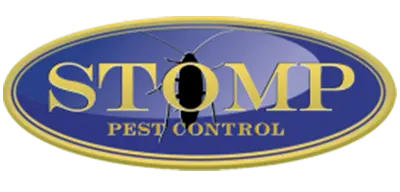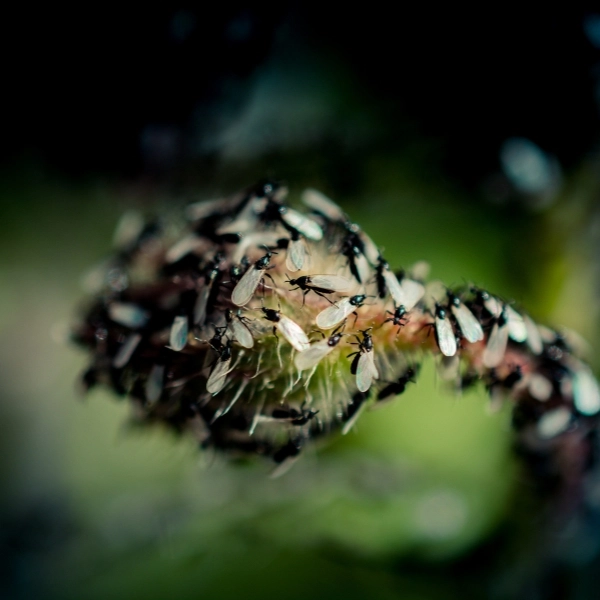Termites are destructive pests that can cause expensive damage if they’re not detected quickly. One of the big red flags that you have a termite infestation is when you see a termite swarm. In this post, our Raleigh pest control professionals will explain what a termite swarm is and how you can detect one before it’s too late. We will also share some tips about how to prevent termites and how Stomp Pest Control can help if you find them in your home.
What is a Termite Swarm?
A termite swarm happens when a termite colony has reached capacity and is attempting to build a new one. Termites typically swarm after their colony has been in place for about 2-3 years.
Swarming termites are also referred to as alates. They swarm into the air to find a mate. Once they launch from their swarm tube, the alates will only fly for a few seconds. Once they land, their wings break and they pair with their mates. There is a slim survival rate for alates because they need soil to survive. Without it, they become dehydrated and die. Termites from one colony will typically swarm once a year. But, the entire process can last from one to several days. Each swarm happens for about an hour.
One of the tricky things about a termite swarm is that it can start with just a few termites, but can turn into a swarm of thousands very quickly. If the termites can’t find a new home, they will quickly die.
Because of their appearance, swarming termites are often mistaken for flying ants. Swarming termites don’t bite or sting, or even eat wood. Their sole purpose is to leave the colony during the swarming season, find a mate, and reproduce to establish new colonies.
When do Termites Typically Swarm?
Termites like to swarm during the warm months, such as spring and summer months, typically after it’s rained. In North Carolina, termite season covers a vast period since these pests can survive in temperates as low as 50 degrees and as warm as 100 degrees. Since termites like the light, finding a swarm around glass doors or windows is rather common.
Where do Termite Swarmers Come From?
Termite swarmers don’t just magically appear. They are a red flag that a termite colony may be inside or near your home.
If you find swarmers outside your home, you probably have a colony in your yard or one in a nearby yard. Swarmers aren’t the best fliers. They typically don’t travel more than 300 feet away from their original colony.
When there are swarmers inside your home, it’s usually a sign that a colony is inside or beneath your home. Remember, since swarmers aren’t produced until a colony reaches maturity, which can take years, termites can do a lot of damage to your home or property before they are even found.
Signs of a Termite Swarm
Besides actually seeing a termite swarm, one sign that there is one nearby is finding broken wings. Remember, the alates break off their wings before pairing with a mate. If you find several wings around, there is a good chance there was a termite swarm nearby.
Of course, a termite swarm means there is a termite colony close. Some additional signs that your home may be hosting termites include:
- Pinprick holes in drywall
- Peeling paint that appears as water damage
- Loose tiles
- Warped or blistered wooden floorboards
- Hollow sounds after tapping wooden surfaces
While those are interior signs of termites nearby, you also have to be mindful of some exterior red flags. If you find mud tubes along the ground against your house, they could be a sign that termites are near. These tubes give termites access to food sources from their underground nests. They also protect their homes against cool, dry air since they need moisture and humidity to survive.
How to Prevent a Termite Swarm
Preventing a termite swarm means preventing termites from appearing in the first place. Swarming termites originate from an established colony which means you have had a termite problem long before you noticed the swarming termites.
To deter termites from your home, follow these tips:
- Drain all water away from your home. This will keep the soil and your home dry which won’t be inviting for termites.
- Don’t leave wood scraps in your yard or close to your home. Any wood stored for an indoor fireplace should be kept dry and covered if it’s outside. Always inspect any firewood before bringing it into your home.
- Replace any damp or damaged wood around your home.
- Seal any cracks inside and outside your home.
Taking these steps can help to deter both termites around your property and termite swarmers.
FAQ About Termite Swarmers
What do termite swarmers look like?
Termite swarmers can get up to 3/8th of an inch in length. Termites generally are light in color and have two pairs of wings. The wings can be white or translucent with bodies that look like they are made from one segment.
What should I do if I see signs of a termite swarm?
Some people think they can buy an over-the-counter treatment, but you need to get to the root of the termite colony if you don’t want another termite swarm. That means calling the professionals at Stomp Pest Control. We have the right treatments for termite pest control in the Greater Raleigh, NC area.
Do termite swarms always mean there is a termite infestation?
A termite swarm is a pretty good indication that there is a termite colony nearby that you want to get inspected. Ignoring this red flag is setting yourself up for expensive damage.
Let Stomp Pest Control Take Care of Your Termite Swarm
If you suspect there are termites in or around your property, call Stomp Pest Control. We have effective termite removal methods and affordable pest control packages to protect your home against termites and a termite swarm. We also offer a 100% satisfaction guarantee on all of our services. Call us today at (919) 231-3292 or fill out the contact form below to discover the Stomp difference.
Contact Form
We would love to hear from you! Please fill out this form and we will get back to you shortly.


